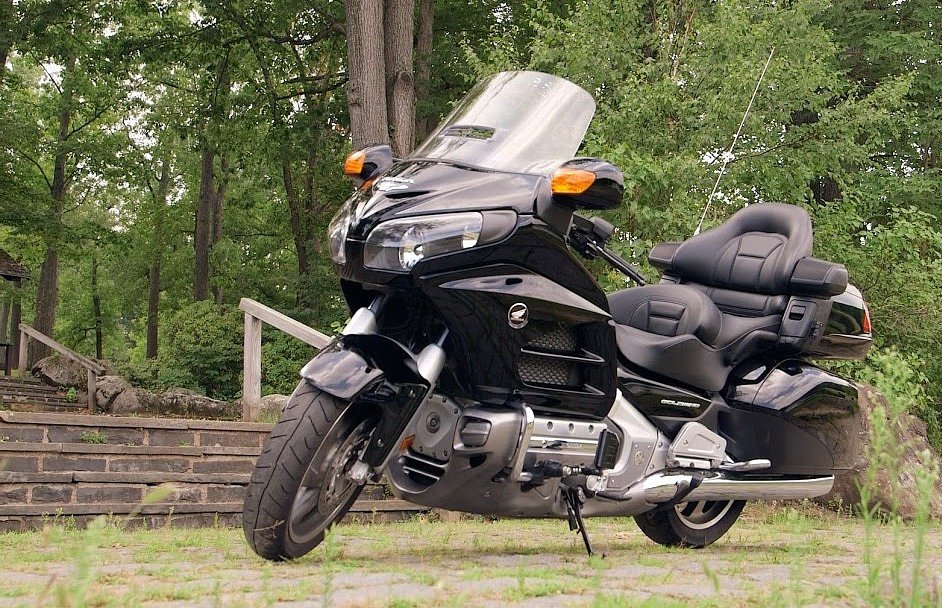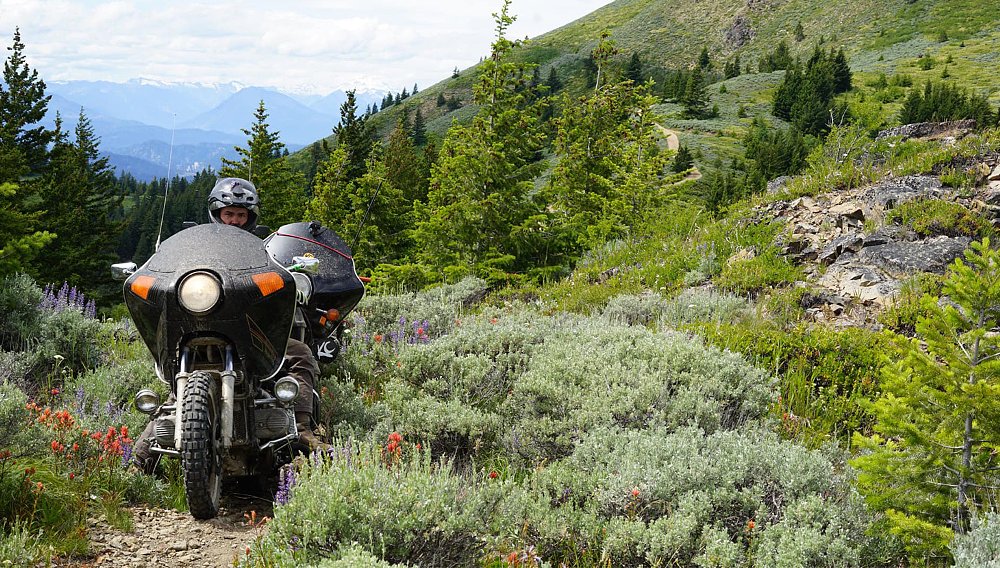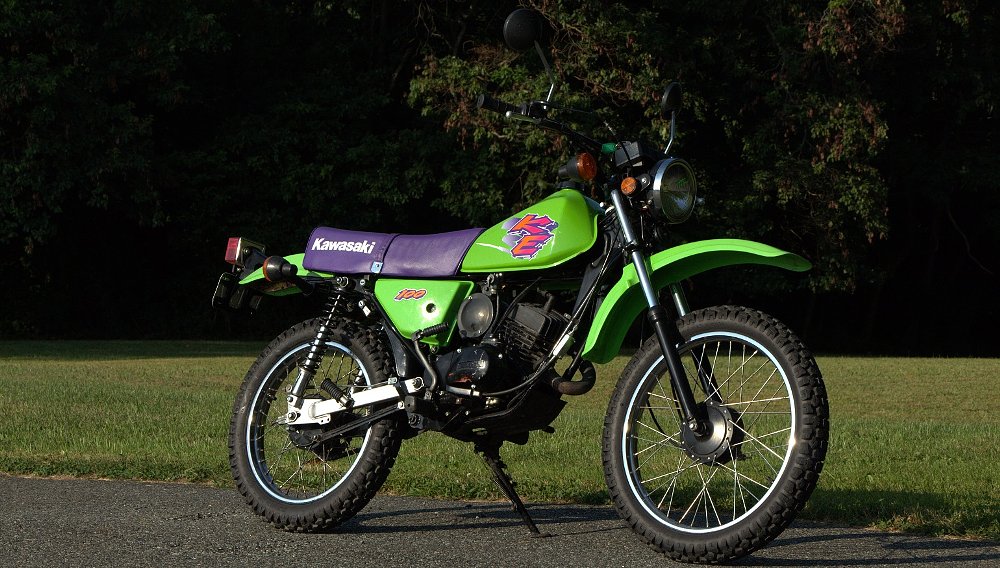"Why don’t you just get an RV?"
When I show up anywhere on a Honda Gold Wing of any age, I get either knowing nods or that query. What a dumb question. Uh, because I don't want an RV? I want a motorcycle.
Specifically, I want a bike knocking on the door of half a ton of curb weight, because I ain't got many years left that I can ride such a machine. Life's getting short for taking day jaunts by motorcycle. I want to take a trip. I want to need to buy tires after a vacation run, not gas. I want to get far away from work and phone service, and I want to do it in a hurry, and I'm gonna bring Mama along and I might want to pick up a case of beer one night on the road.
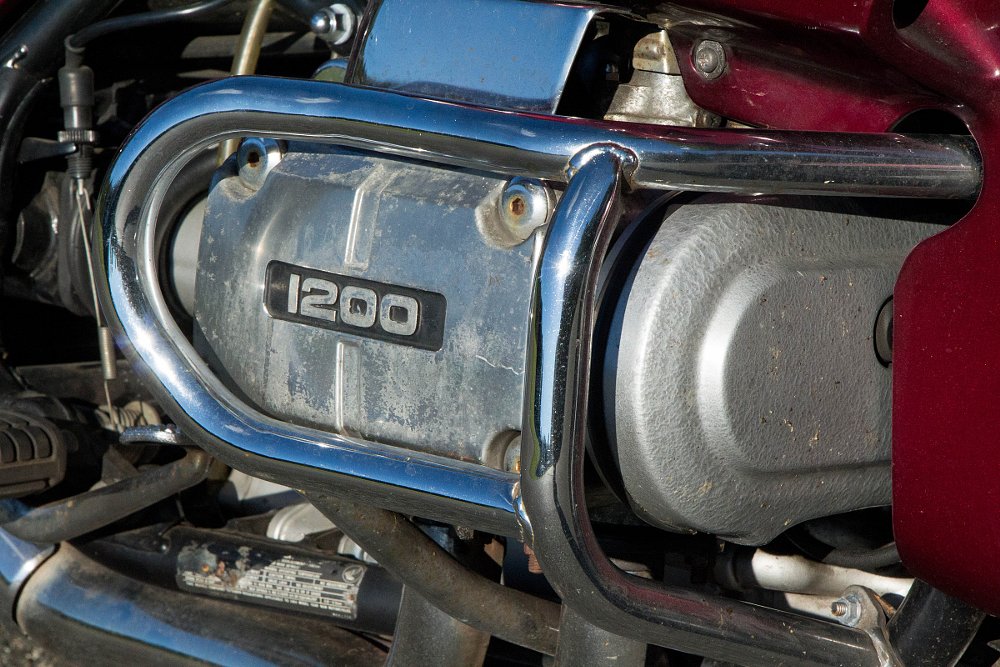
That's why I want a Gold Wing.
Happily, they've been available for nearly half a century, and every generation I've ever ridden has been a superb motorcycle. Let me tell you a bit about the third generation. Specifically, the 1984 Honda Gold Wing Interstate you see here.
How much?
In the used arena, that's the most relevant question. Our 1984 specimen with 58,850 miles on the odometer is in pretty good nick. It bears the scars of its work over the years, but the machine is presentable, right down to its original paint. If you're looking for a third-gen (1,200 cc, four-cylinder engine) in similar shape, expect to shell out $3,000 at the low end, but condition is going to vary wildly on bikes with the heavy mileage you'll no doubt find.
A new Gold Wing will run you $27,500 or so, but when this machine was sitting on the showroom floor, the hangtag would have read $6,195, roughly equivalent to $16,250 in 2021 dollars. Even if one could buy this bike new today, by some measure it's not even fair to compare it to the modern version.
But I'm gonna do it anyway.
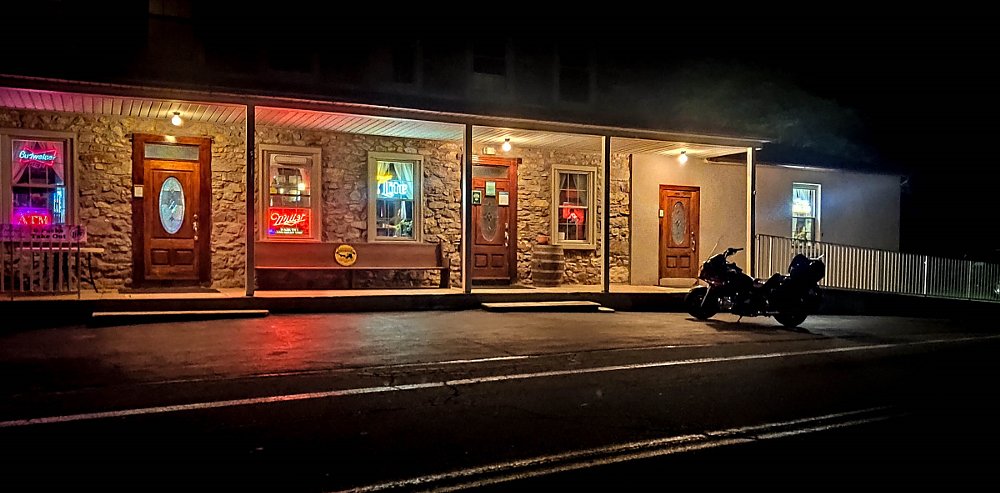
The Wing needs no introduction, but some information is helpful
I jabbered a little about the sixth generation Gold Wing in the 2018 review and the fifth gen in the 2015 review. But to go back to the beginning, here's the one thing you need to know: This bike was conceived as a huge roadster. Honda kind of morphed it into a tourer by offering the Interstate package with the introduction of the second gen back in 1980, and they went super-luxe in 1984 with the advent of the Aspencade package, which Honda’s old spotter's guide says "distinguishes itself from the Interstate with a new Type III radio/cassette/communications system, LCD instruments and special rear lightbar." Remember that. We’re going to come back to it.
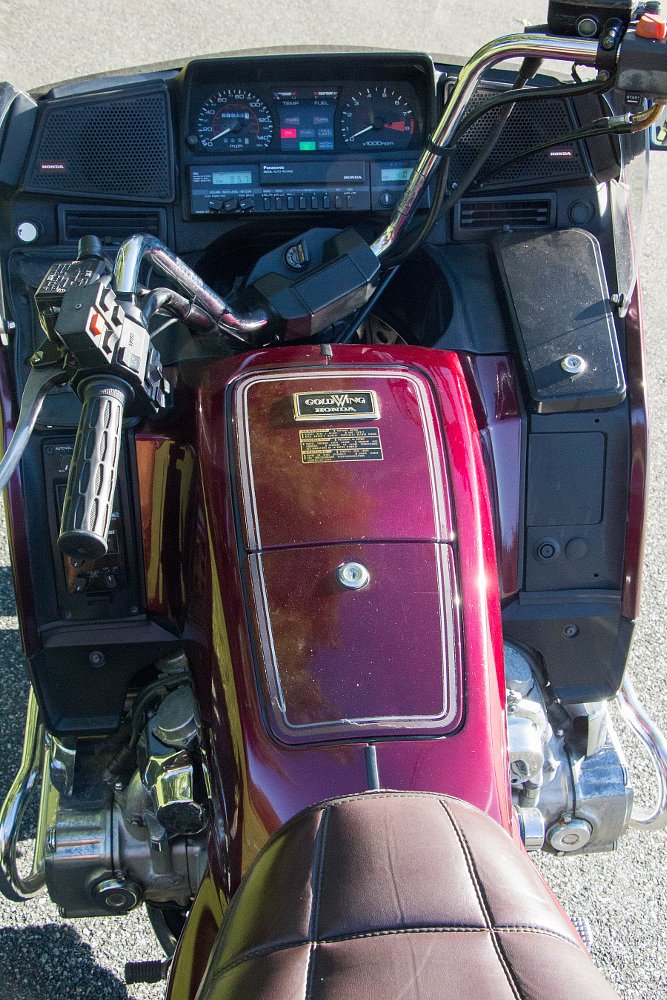
Regardless of generation, I think these motorcycles in nearly all variants dance at the upper limit of what a strong, skilled rider can ride.
Settling into the comfortable saddle of this '84 reminds me of how the cockpit of a tourer looked way back when. You got your radio, your air vents, storage all over the fairing, a CB radio, and more glass than a living room bay window. Other than that knob over there on the left that levels the headlight when you’re all loaded up, the console looks pretty similar to a modern touring bike. Yeah, it’s dated-looking, and there’s no Apple CarPlay, but you've got room for snacks and smokes, weather protection, tunes and a civilized way to speak to your passenger.
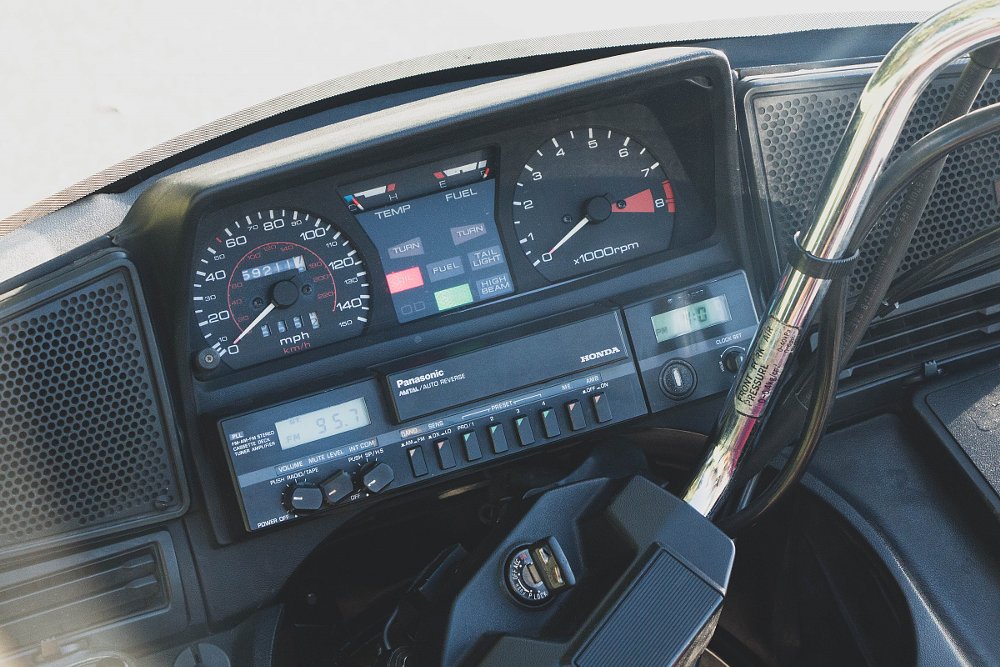
Maybe this ain't so different from a modern Gold Wing.
Riding the Wing
For all of the Wing’s cumbersome unwieldiness I just got done talking about, once those four pots light off and the tires roll just a bit faster than loading-ramp speed, the weight melts. It just drops. And those four holes, though small by 2021 standards, were considered powerful motivation the year Ronnie Reagan won his spot in the White House. With just double-digit power and torque numbers, it’s easy to write off a 1200 Wing, but that would be foolish. The 1200 was the biggest and last of the pancake fours, having received all the displacement increases that Honda deemed reasonable. At idle, these flat fours have just a touch of shake, but once the rev counter needs a comma, they are incredibly smooth.
Power is available all over the tach. From a dead stop, the machines work a bit to get going. You ain't gonna stand it on the taillight with the throttle, but an oldie Goldie gathers speed deceptively. If you want to push it, the bike will happily oblige passing notions, death wishes, and everything in between. Closed-throttle, 3,500-plus-rpm decel exhaust pops are standard fare; Honda used secondary air injection on these bikes and even when working correctly, the system doesn’t work correctly.
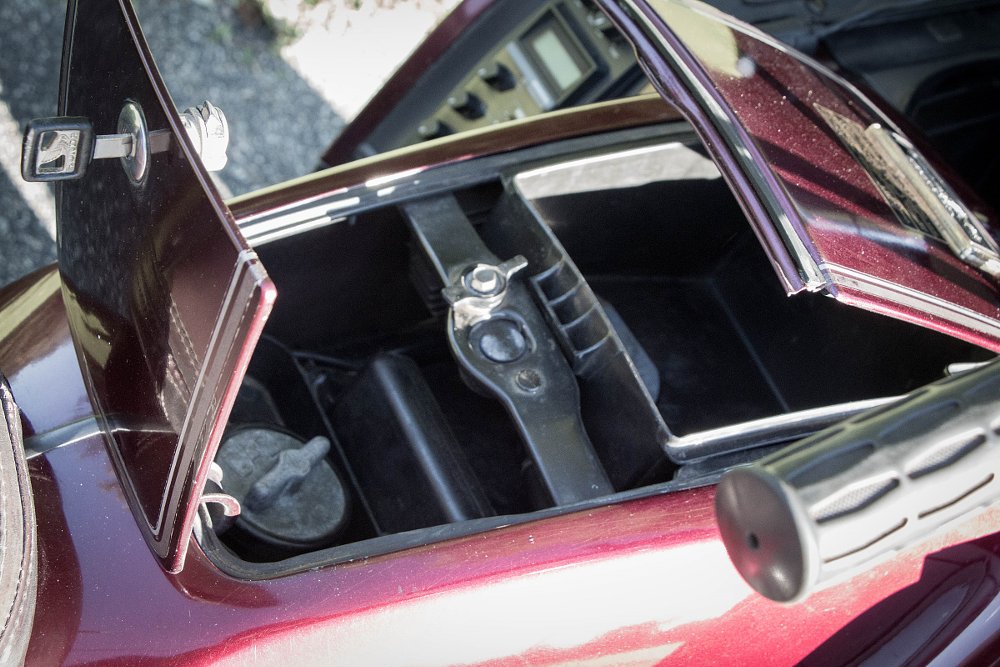
Keep in mind that in 1984 the competition for this machine from Harley-Davidson would have been a full-dress FLT, likely powered by a Shovelhead backed up by five cogs in the box, just like the Wing. Comfy cruise speed on those is around 70 mph. Push a same-year Gold Wing and you can crank up to 90 mph, and the only thing that suffers a bit is the audio — just turn up the volume. One nit to pick is the fuel mileage. A judicious throttle hand will get you nearly 40 miles per gallon. Get silly with the right wrist and that number falls closer to 30. In that sense, the newer Wings outclass the oldtimers. But with nearly six gallons on board (and a fuel gauge!), you won’t be stopping to think about it very often.
The weight that melts away with speed comes back to mind as I consider braking and handling. Brakes are a linked affair ("unified," in Honda-speak circa 1984). The front lever operates the caliper on the right front disc. The pedal operates the rear brake and left front caliper. The bikes also received Honda’s TRAC system (an acronym I somehow actually remembered: Torque Reactive Anti-dive Control). It’s a neat little system that uses brake pressure to balance fork pressure. In spite of all the magazine articles you may read about how terrible it is, I like it and see zero reason to rip it off or do away with it. I found positions three and four most useful. Especially on a heavy bike with a heavy rider, fork dive can really slow you down, especially on poor asphalt or on a twisty road.
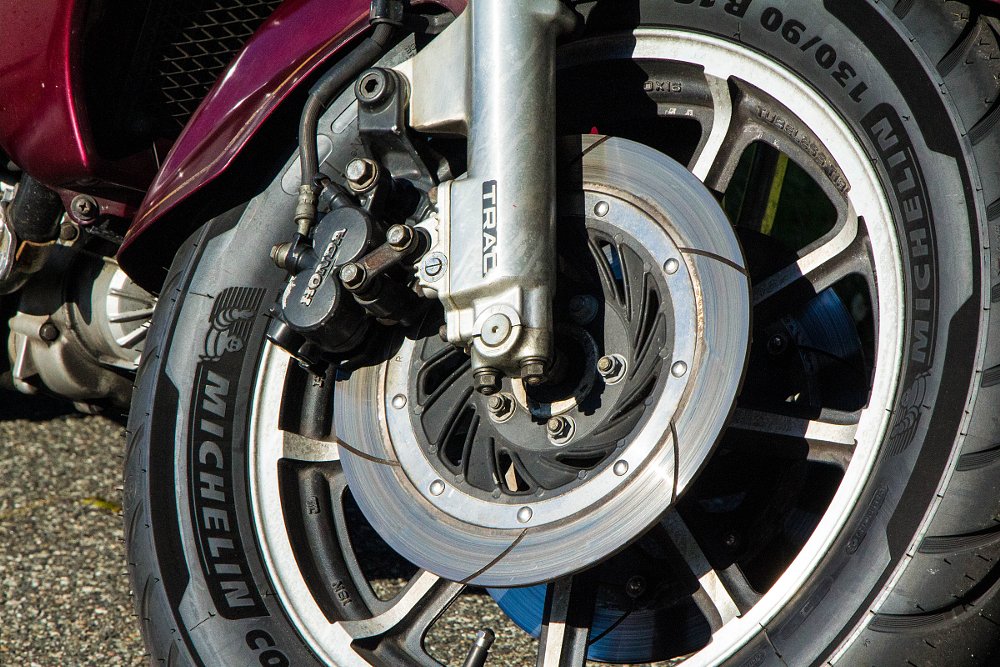
Speaking of the suspension, that works well, too. Amazingly, this old junker has air suspension front and rear, and it works wonderfully. For two-up riding, about 55 psi in the back (max is 57) and four psi in the front (max is six) is just peachy for me. Note that on the Interstate model air must be added with a small hand pump. Were this the Aspencade… well, there would be a little pump located in the false fuel tank location with an outlet over on the right fairing lower. Swank!
So it brakes pretty well and soaks up the bumps and you can definitely hustle the bike around the corners. It feels a bit like the motorcycle equivalent of a hot-rodded 2WD pick-'em-up truck: It gets through corners faster than you would think, but it's still heavy and not exactly the right tool for the job. It does not handle as well as newer Goldies, especially the latest gen. But it's not so far behind I'd fail to consider one, either.
A 16-inch hoop up front and 15 out back might be the weirdest touring tire combo of all time, but they're tubeless for easy flat repair and they do make the handling light and lively. And this one doesn't have the headshake problems I suffered with on the fifth-gen Wing. (This motorcycle has recently been shod with fresh Commander IIIs, though. Top-notch tire if you can find them these days.)
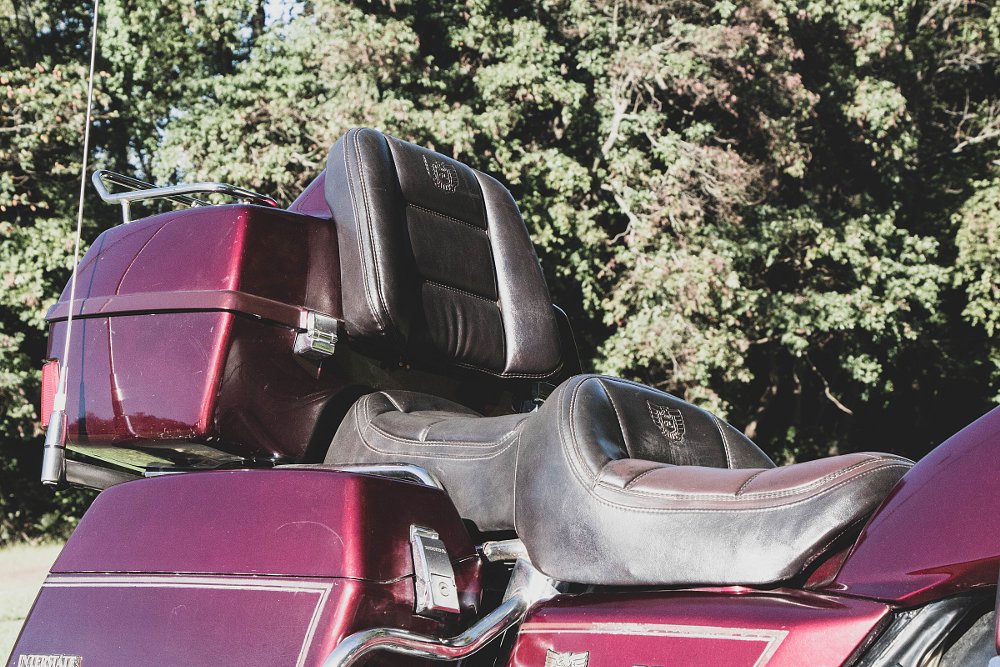
Ergonomics, comfort and features
Power and handling are all good, but that's not what people buy Gold Wings for. The most notable part of this bike is how well it works ergonomically. It holds its own today in 2021. It must have blown a comparable H-D out of the water at the time.
Like all Gold Wings I've ridden, my wife and I have enough room that we don't touch when we ride together, even when I was at my fattest. Personally, I like that so I can get some airflow on my back. She is very comfortable on the bike, even with footpegs. (The Aspies had passenger floorboards, but kept pegs for the pilot.)
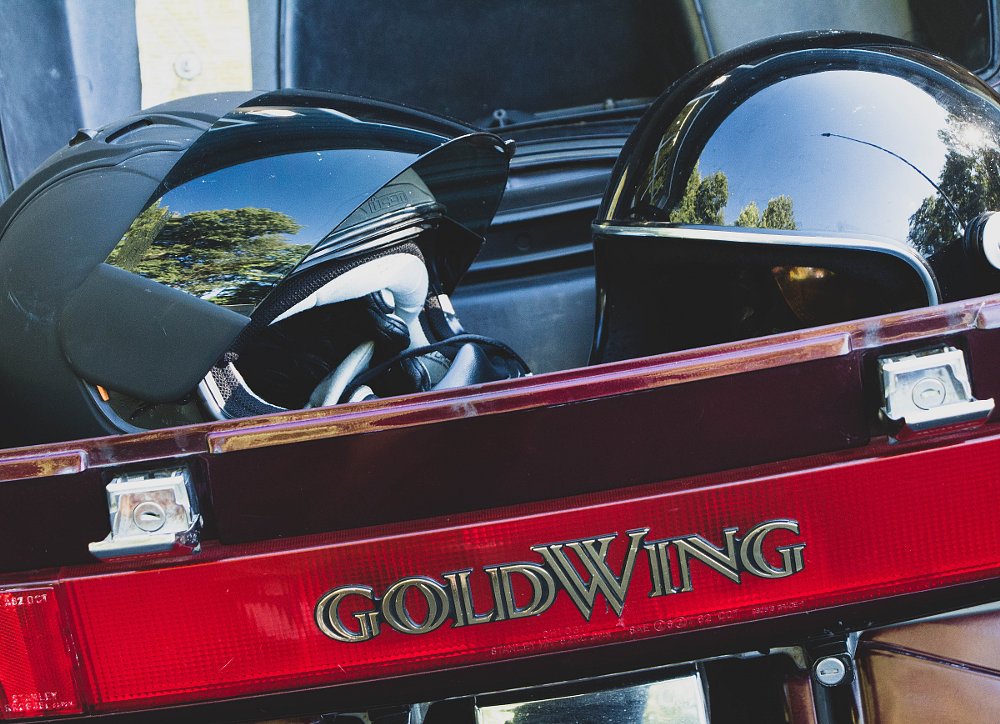
There's a bundle of room on these bikes for gear. The top case easily swallows two huge lids with no finagling, something I couldn't say for the modern version of this machine I tested a few years back. Bags are similarly commodious. The fairing and 'shield protection are glorious, some of the best I've experienced.
The radio is a bit crackly, but plenty loud, even at supra-legal speeds. The tape deck works fine, too. Heck, it even has four presets and a tune knob on the left handlebar control. No backlighting for the buttons does make nighttime station changes difficult to impossible. On this '84, the LCD screens for tuner and clock were scratched and faded from time, but a little restoration work on those had them looking as good as new. I had no way to test the CB or rider-passenger com system, because I don't have the original headset to plug in, but they fire up and appear to work, too.
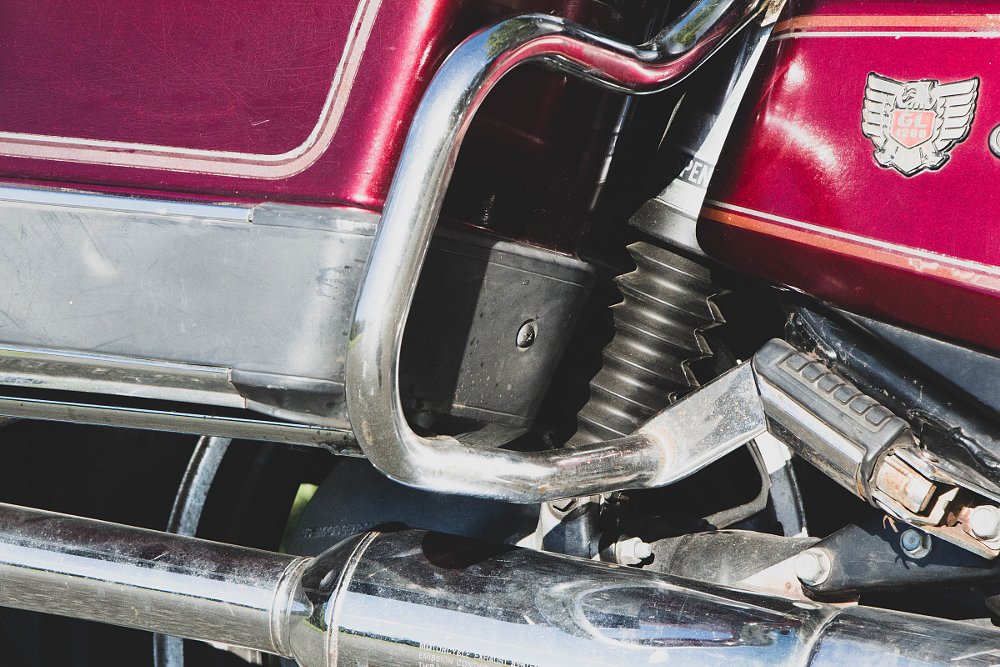
Honda included so many nice little considerate touches: guards on the leading edges of the bags to protect them from boots when mounting and dismounting and road gunk. Dual helmet locks. Hazard lights. Self-cancelling turn signals. Shaft drive for low maintenance. Juice lifters, so no valve adjustments.
I told you we’d come back to the Aspencade. In '84, Honda’s most upscale version of this bike had a better stereo, LCD clocks instead of analog (a move some would argue is a downgrade), and a fancier rear light bar. That's what Honda came up with. I wouldn’t have ponied up for more than the Interstate version back then, and I think a lot of other riders felt similarly.
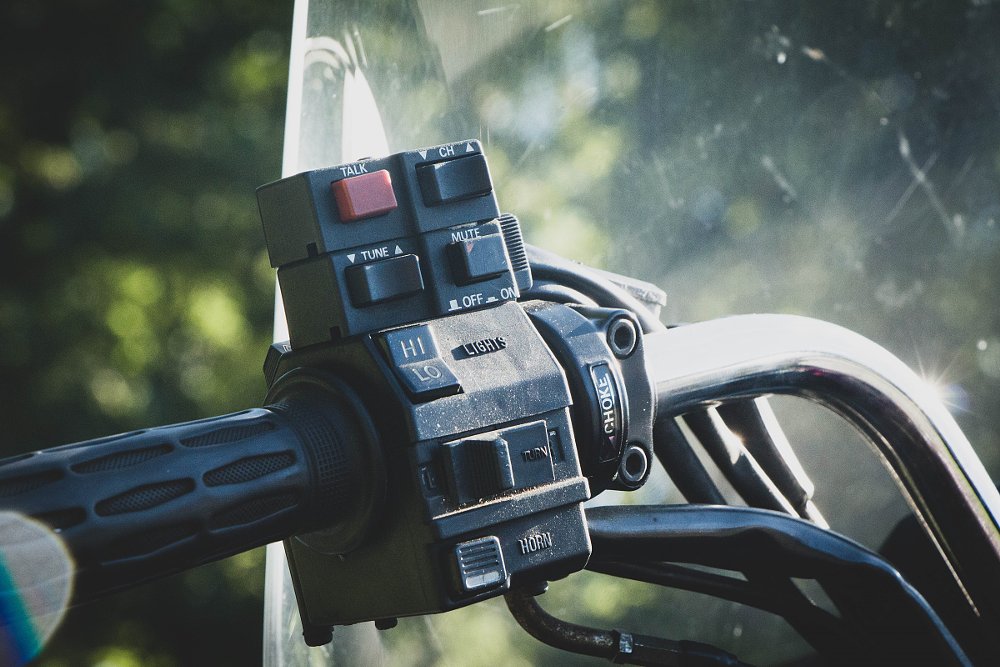
Which leads me back to my natural question: "Is a new Gold Wing really that much better than this one that's officially an antique?" I don't know. I guess it would be for some people. It would have a warranty. That would be pretty cool. Most shops aren't exactly keen on seeing a 40-year-old hooptie rolling in. A new one would have ABS, which is also a bit of a boon, and it would be a mite easier to integrate modern communications systems and electronics with the bike, if that’s your thing. Handling and braking are better on the newer one, but not massively so for a bike of this weight, size, and mission, I feel.
When it comes down to it, I do have to wonder if Honda hit on the touring recipe around the time they conjured up this bike with integrated fairings. Is a new Wing $23,000 better? Not to me. Honda's designers, engineers, and factory did a wonderful job on the 1200. It's not cutting-edge — but it was. The machine absolutely works. It is beyond relevant today. It offers amenities we still don’t see on machines positioned as touring mounts. (A Concours 14 with hydraulic lifters would be nice, wouldn’t it?)
Like I said, it’s not fair to compare an '84 model to a '21. The question really is to which bike goes the detriment?











